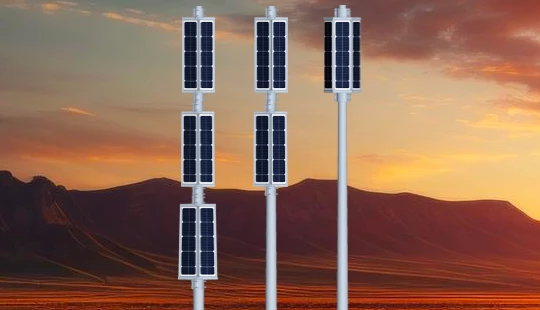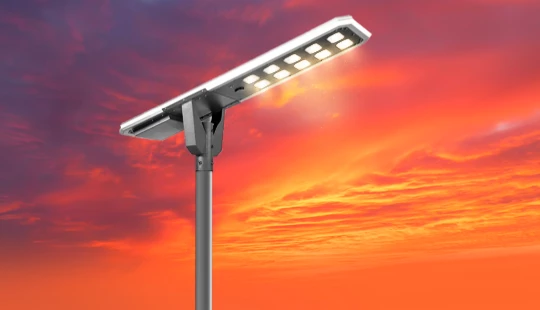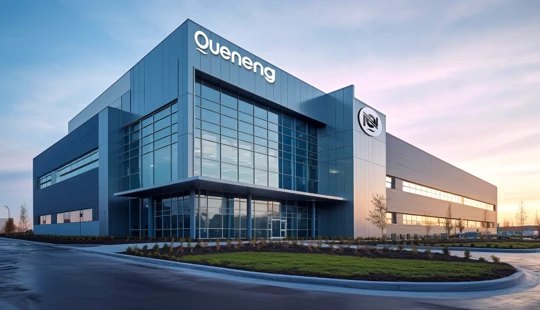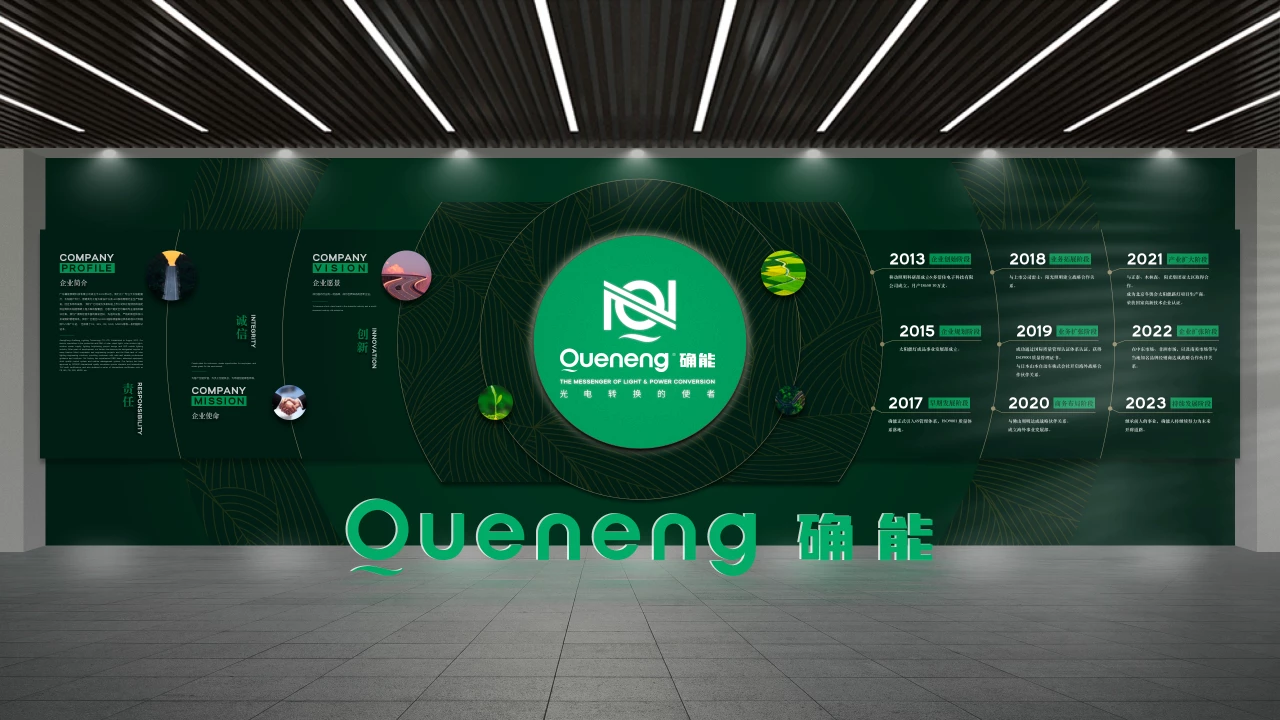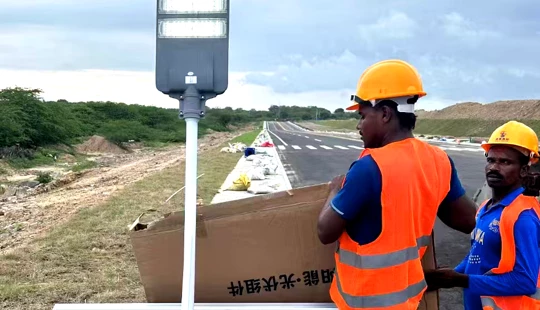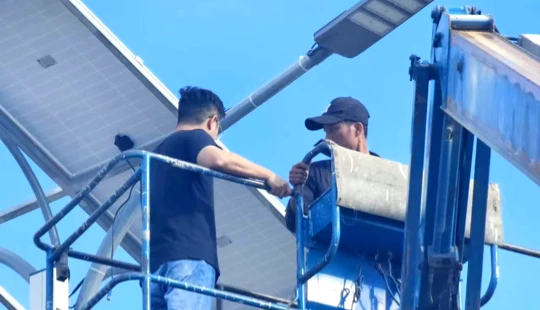Top LED solar street lights for Metro Manila | Insights by Quenenglighting
Choosing the Best LED Solar Street Lights for Metro Manila: A Professional Procurement Guide
Metro Manila, a sprawling metropolis, faces increasing demand for sustainable and cost-effective urban infrastructure. LED solar street lights offer an ideal solution, providing reliable illumination while reducing grid dependency and carbon footprint. For organizations looking to re-procure or expand their solar lighting infrastructure, understanding the nuances of modern solar street light technology is crucial. This guide addresses the top professional questions for a strategic investment.
What are the essential technical specifications for solar street lights designed for Metro Manila's tropical and urban environment?
Metro Manila's climate presents unique challenges: high humidity, heavy rainfall, and occasional typhoons. Therefore, robust specifications are non-negotiable:
- IP Rating: A minimum of IP65 is required, but an IP66 rating is highly recommended for superior protection against dust ingress and powerful water jets, ensuring longevity against tropical downpours.
- Material Durability: Housings should be made of corrosion-resistant materials like die-cast aluminum with a strong powder coating to withstand humidity and salt air (if near coastal areas).
- Temperature Tolerance: Components (especially batteries and electronics) must be rated for high ambient temperatures, typically -20°C to +60°C, to ensure stable operation and lifespan in the Philippines' heat.
- Wind Load Resistance: Poles and fixtures must be engineered to withstand significant wind loads, especially important during typhoon season. Structural calculations are vital.
- Luminaire Efficacy: Modern LED chips should offer high luminous efficacy, typically 150-180 lumens per watt (lm/W), to maximize light output per unit of power consumed.
- Solar Panel Efficiency: Monocrystalline silicon solar panels are preferred for their higher efficiency (typically 18-22%) and better low-light performance, critical for overcast days.
How do advanced battery technologies, particularly LiFePO4, enhance the longevity and cost-effectiveness of solar street lighting solutions?
The battery is the heart of a solar street light, directly impacting its lifespan and reliability. While traditional lead-acid batteries were once common, Lithium Iron Phosphate (LiFePO4) batteries have become the industry standard for high-quality solar street lights due to several significant advantages:
- Extended Cycle Life: LiFePO4 batteries offer significantly longer cycle lives, typically 2,000 to 6,000 cycles at 80% Depth of Discharge (DoD), compared to 300-500 cycles for lead-acid batteries. This translates to a lifespan of 5-10 years or more, drastically reducing replacement frequency and maintenance costs.
- High Energy Density: They are more compact and lighter, making integration into all-in-one designs easier and safer.
- Stable Performance: LiFePO4 batteries perform consistently across a wider temperature range and maintain a stable voltage output throughout their discharge cycle.
- Safety: They are inherently safer, less prone to thermal runaway, and contain no toxic heavy metals, making them a more environmentally friendly choice.
- Lower Total Cost of Ownership (TCO): Despite a higher initial cost, their extended lifespan, reduced maintenance, and superior performance lead to a significantly lower TCO over the system's operational life.
What smart features and IoT capabilities are crucial for optimizing large-scale solar street light networks in a metropolitan area?
For large-scale deployments like in Metro Manila, smart features transform individual lights into an intelligent, manageable network, driving efficiency and responsiveness:
- Remote Monitoring and Control: Cloud-based platforms allow real-time monitoring of battery status, solar charging, LED functionality, and fault detection from a central location. Lights can be remotely dimmed, brightened, or scheduled. This reduces the need for manual checks, saving labor costs.
- Adaptive Lighting/Dimming: Integration with motion sensors or programmed schedules allows lights to dim when no activity is detected and brighten when needed, conserving energy. For example, lights might dim to 30% brightness from midnight to 5 AM and return to 100% when a vehicle or person approaches.
- MPPT Charge Controllers: Maximum Power Point Tracking (MPPT) controllers are essential. They optimize power harvesting from the solar panel by up to 15-30% compared to older PWM (Pulse Width Modulation) controllers, especially in varying light conditions or partial shading. This ensures maximum charge efficiency and longer autonomy.
- Data Analytics: Collecting data on energy consumption, charging patterns, and fault histories can provide insights for predictive maintenance and future system optimization.
- Integrated Communication: Utilizing technologies like LoRaWAN, Zigbee, or cellular (4G/5G) for reliable communication across the network.
How can we accurately determine the ideal power output (wattage) and autonomy period for solar street lights to ensure consistent performance?
Accurate system sizing is critical to prevent underperformance and ensure consistent illumination, especially during extended cloudy periods in the Philippines. This involves:
- Lighting Standards: Adhering to relevant lighting standards (e.g., IESNA RP-8-14 for Roadway Lighting, or local equivalents) which specify required lux levels based on road classification (e.g., major arterial roads, residential streets). For example, a main road might require 15-20 lux average, while a residential street might need 5-10 lux.
- Pole Height and Spacing: These directly influence the required lumen output. Taller poles and wider spacing demand higher wattage LEDs. A typical 6-meter pole might use a 30-50W LED, while an 8-10 meter pole might require 60-100W or more.
- Daily Operating Hours: Typically 10-12 hours per night for street lighting.
- Peak Sun Hours (PSH): This is the average number of hours per day when solar insolation equals 1000 W/m². For Metro Manila, PSH can range from 3.5 to 4.5 hours/day depending on the season and specific location. This is crucial for calculating solar panel size.
- Autonomy Days: This refers to the number of consecutive cloudy or rainy days the system can operate without sunshine. For Metro Manila, a minimum of 2-3 days of autonomy is recommended; for critical areas, 4-5 days provides greater resilience.
- Battery Sizing: Battery capacity (Ah or Wh) is calculated based on total daily energy consumption (LED wattage × operating hours) multiplied by the required autonomy days, and then divided by the Depth of Discharge (DoD) to avoid over-discharging the battery.
- Solar Panel Sizing: Panel wattage is determined by the total daily energy consumption, divided by PSH and factoring in system losses (e.g., temperature, dust, cabling – typically 20-30%).
What are the long-term maintenance requirements and critical warranty considerations for sustainable solar street light investments?
Investing in solar street lights is a long-term commitment. Proactive planning for maintenance and understanding warranty terms are essential for maximizing ROI:
- Minimal Maintenance: High-quality solar street lights are designed for low maintenance. The primary tasks involve periodic cleaning of solar panels (every 6-12 months, depending on dust accumulation) to maintain efficiency, and visual inspections for physical damage.
- Component Lifespan:
- LED Luminaires: Typically rated for 50,000 to 100,000 hours, meaning 10-20+ years of operation.
- LiFePO4 Batteries: As mentioned, 5-10 years, with some lasting up to 15 years depending on usage and charging cycles.
- Solar Panels: Expected to perform for 20-25 years, with a guaranteed power output (e.g., 80% of original output after 25 years).
- Charge Controllers/Electronics: Generally 5-10 years.
- Warranty: Look for comprehensive warranties covering:
- Full System Warranty: At least 3-5 years on the entire fixture.
- Battery Warranty: Specific warranty on battery performance (e.g., 5-7 years).
- Solar Panel Warranty: A long-term power output warranty (e.g., 25 years linear power warranty).
- Local Service and Support: Availability of local technicians or partners for quick troubleshooting and part replacement is crucial in Metro Manila.
- Remote Diagnostics: Smart features, as discussed, significantly aid in predictive maintenance, alerting operators to potential issues before they become critical failures. This extends component life and reduces emergency repairs.
Quenenglighting: Your Strategic Partner for Metro Manila's Solar Street Lighting
When considering your next procurement of LED solar street lights for Metro Manila, Quenenglighting stands out as a reliable and innovative partner. We offer solutions engineered to meet the stringent demands of urban tropical environments, integrating the latest technologies for superior performance and longevity.
- Advanced LiFePO4 Battery Systems: Ensuring extended operational life and low total cost of ownership.
- High-Efficiency Components: Utilizing High Quality monocrystalline solar panels (19%+ efficiency) and high-lumen LEDs (170 lm/W+) for maximum brightness and energy harvesting.
- Robust Design & IP66 Rating: Products are built to withstand the Philippines' challenging weather conditions, ensuring durability and reliability.
- Smart IoT Integration: Offering advanced remote monitoring, adaptive dimming, and MPPT controllers for optimized energy management and simplified maintenance of large networks.
- Customizable Solutions: Ability to tailor wattage, autonomy, and design to specific project requirements and lighting standards.
- Comprehensive Warranties & Support: Providing strong product warranties and technical support to guarantee your long-term investment.
Choose Quenenglighting for sustainable, high-performance, and intelligently managed solar street lighting solutions in Metro Manila.

Have more questions about our products or services?
The latest hot news you might like

Discover how solar panels power street lights, exploring the technology behind solar energy conversion, storage systems, and how solar-powered street lights are revolutionizing urban and rural lighting solutions.

Learn how AC Solar Hybrid Street Lights work, their advantages, disadvantages, system behavior in low-sunlight conditions, and why hybrid technology is ideal for regions with unstable sunlight.

Municipalities around the world are increasingly adopting solar-powered streetlights as part of their urban development strategies. Rising energy costs, the need for sustainable infrastructure, and government green initiatives are driving cities to switch from traditional street lighting to advanced LED solar streetlights.
Queneng Lighting provides municipalities with cost-effective, energy-efficient, and durable solar lighting solutions, ensuring safe and sustainable public spaces.
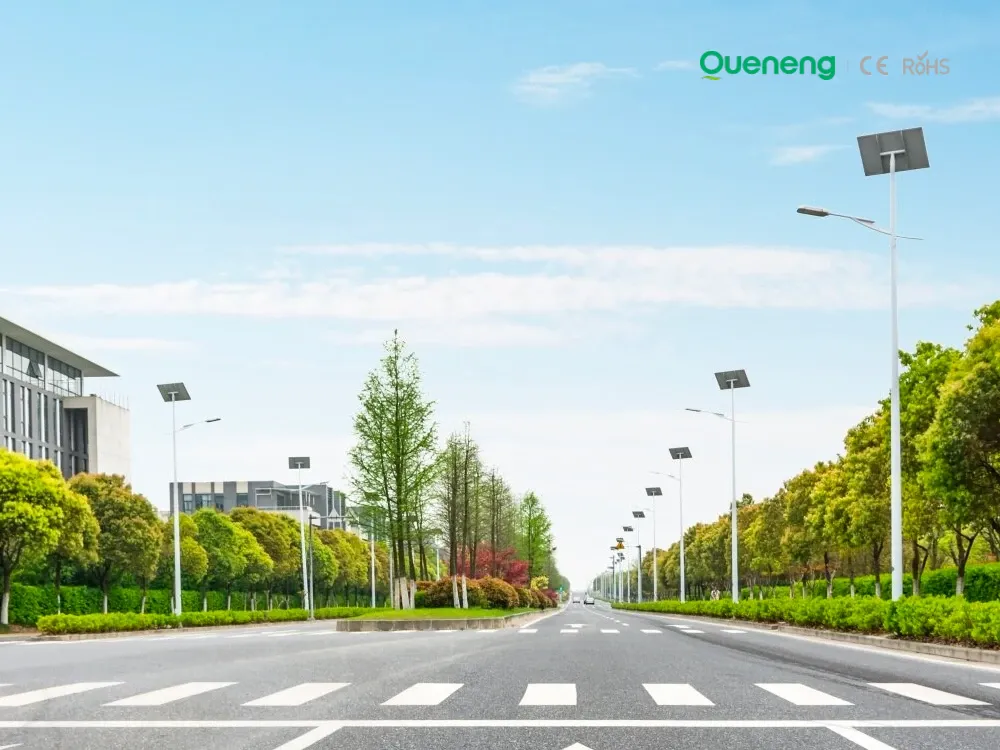
In recent years, the purchase of solar streetlights for municipalities has become a growing trend across the globe. Local governments are under pressure to reduce public expenditure, promote green energy, and create safer communities. Solar streetlights provide a reliable, cost-effective, and sustainable solution that meets these needs. Queneng Lighting, as a leading solar street lighting manufacturer, has supported multiple municipal projects worldwide with customized and energy-efficient solutions.
FAQ
Solar Street Light Luqing
Do Luqing solar street lights work in cold or snowy climates?
Yes, Luqing solar street lights are designed to work in various weather conditions, including cold and snowy climates. The solar panels are made to operate efficiently even in low temperatures, and the LED lights perform well in all weather.
What are the main benefits of using Luqing solar street lights in urban areas?
In urban areas, Luqing solar street lights reduce dependency on the grid, cut down on electricity costs, and minimize environmental impact. They also offer easy installation, which reduces the need for extensive wiring and infrastructure changes.
Schools and Educational Institutions
How are the solar lights maintained?
Solar lights require minimal maintenance, typically only occasional cleaning of the solar panels and checking the battery and light functions.
Public Gardens and Landscape Lighting
Can solar lights be customized for specific landscaping needs?
Yes, we offer customizable solar lighting solutions to meet the unique needs of different landscaping projects. From adjusting the brightness to selecting the appropriate lighting style and design, we can tailor our products to fit your vision.
Sustainability
What is the lifespan of the solar street light battery?
Queneng solar street light batteries typically last 5–8 years, depending on usage frequency and environmental conditions. The batteries are replaceable, and regular maintenance can help extend their lifespan.
Batteries and the environment
What is the main manifestation of the hazards of used batteries?


Queneng's Luzhou Solar Street Light provides sustainable, energy-efficient outdoor LED lighting. Powered by solar energy, it's a cost-effective and eco-friendly solution for illuminating streets and pathways. A reliable and durable LED solar street light.

Illuminate your outdoor spaces with the Solar Street Light, a cutting-edge solution combining advanced solar technology and energy-saving LED lighting.

Discover the Lulin High-Performance Solar Street Light by Queneng, a durable and energy-saving outdoor lighting solution. Designed for efficiency and reliability, it harnesses solar power to sustainably illuminate streets and pathways. Optimize your outdoor spaces today with Queneng's innovative solar street lighting technology.

The Solar Streetlights of Luhao for Municipalities are designed to deliver reliable, energy-efficient, and cost-effective public lighting solutions. Equipped with advanced LED technology, durable lithium batteries, and high-efficiency solar panels, these streetlights provide consistent illumination for roads, parks, residential areas, and government projects.

If you would like more information about Queneng solar lighting solutions, please send us a message by filling out the form below. Our professional team will get back to you within 24 hours!
Rest assured that your privacy is important to us, and all information provided will be handled with the utmost confidentiality.
Schedule a Meeting

Book a date and time that is convenient for you and conduct the session in advance.
Have more questions about our products or services?

